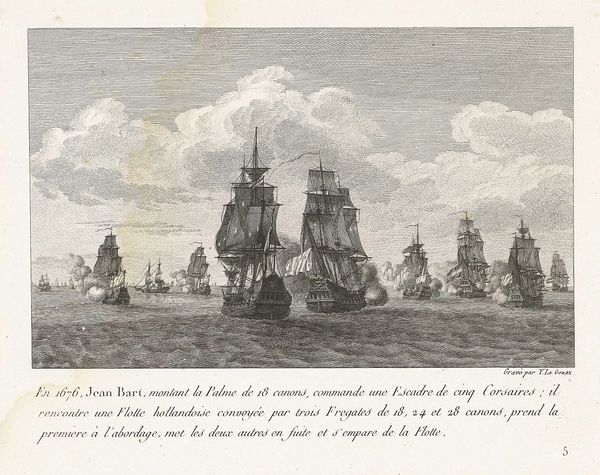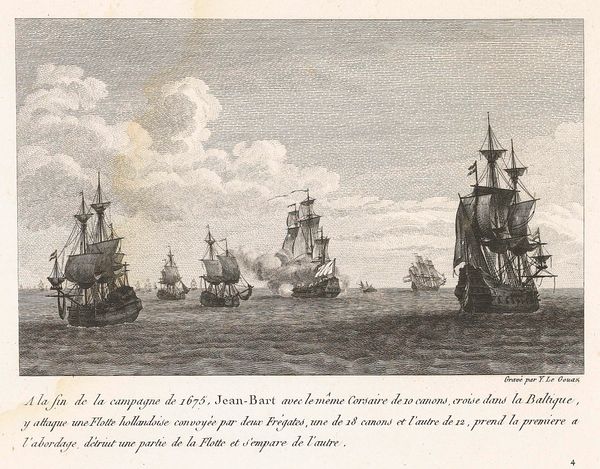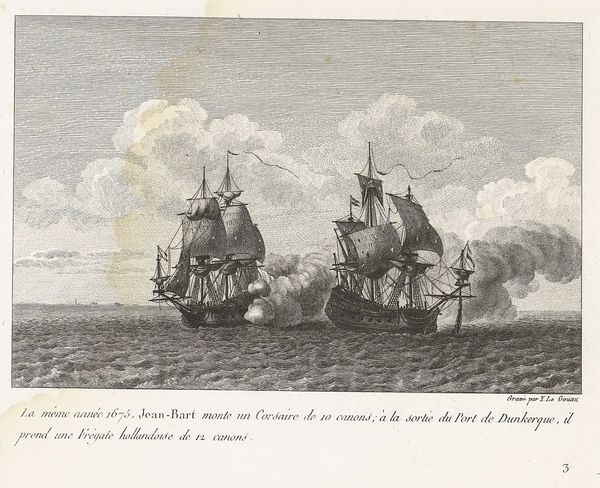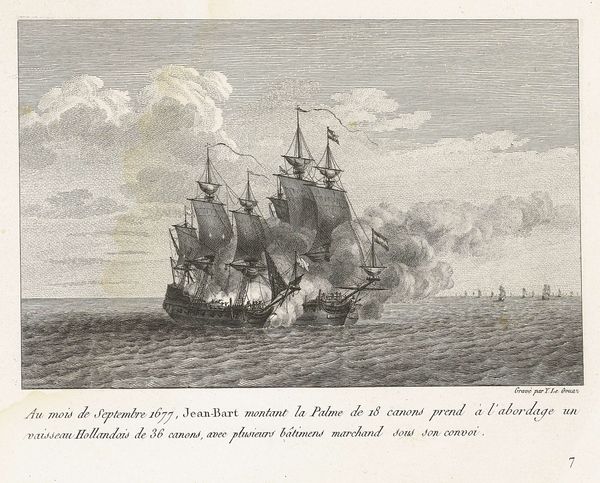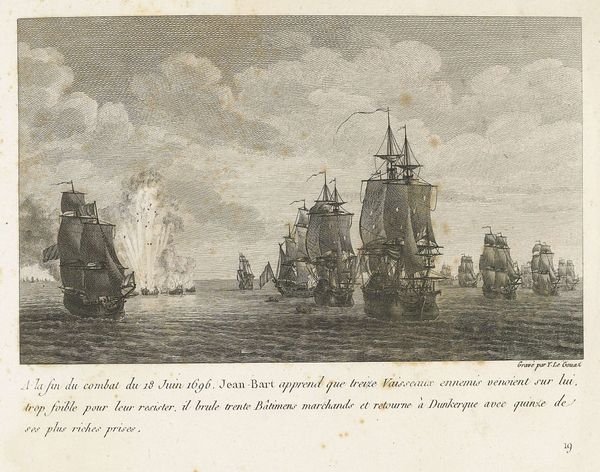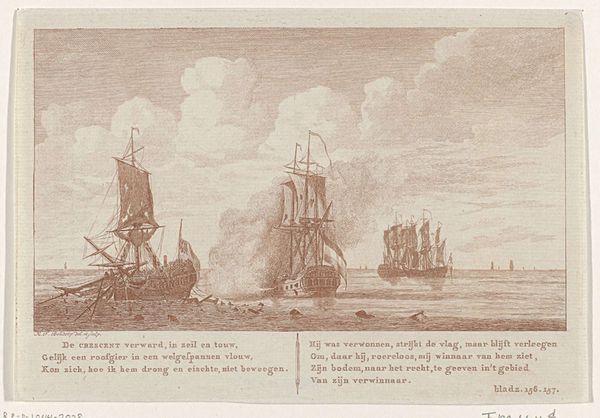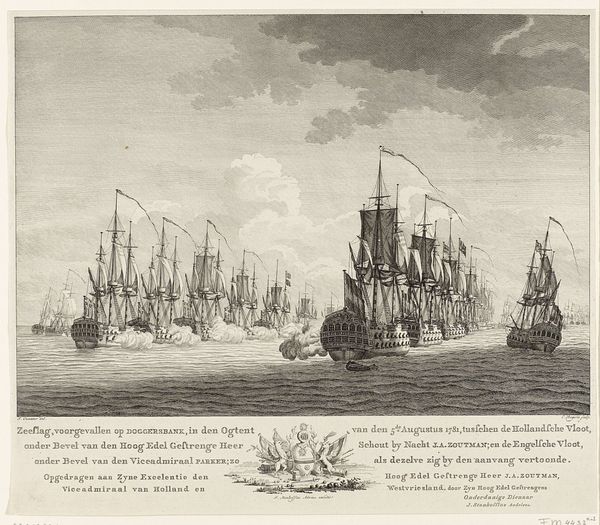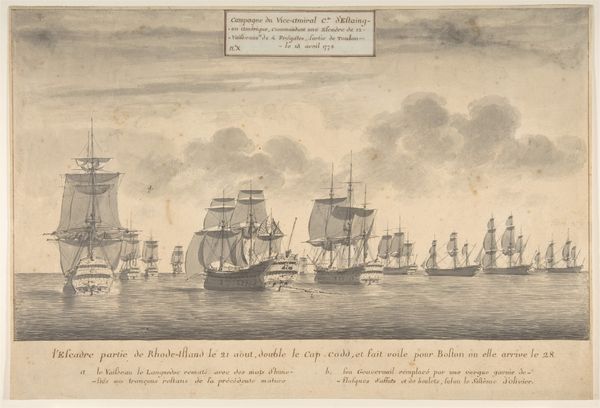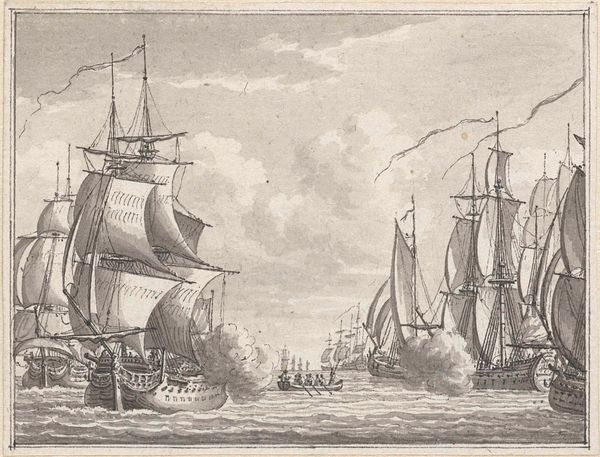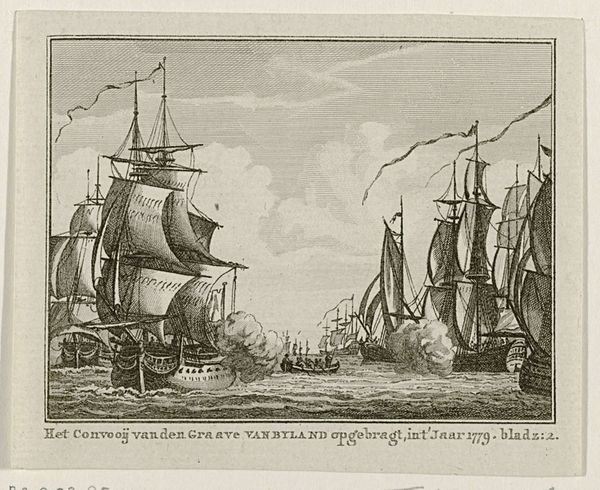
Jan Bart vaart Duinkerke binnen met de heroverde graanschepen, 1694 1806
0:00
0:00
yvesmarielegouaz
Rijksmuseum
Dimensions: height 180 mm, width 220 mm
Copyright: Rijks Museum: Open Domain
Curator: Before us, we have Yves Marie Le Gouaz's engraving, titled "Jan Bart vaart Duinkerke binnen met de heroverde graanschepen, 1694", made in 1806. It depicts a naval scene, specifically Jan Bart sailing into Dunkirk. Editor: My initial impression is one of intense activity, though rendered with remarkable restraint in this monochrome print. The sheer number of ships creates a powerful sense of bustling, triumphant energy. Curator: Indeed, the composition, though seemingly chaotic at first glance, is carefully orchestrated. The artist's use of line and the stark contrast effectively draw the eye through the mass of ships towards a focal point – though it's less about highlighting one ship and more about the armada itself. There's a semiotic logic at play, presenting a spectacle that reflects power and command. Editor: Beyond the purely visual, the artwork serves as a powerful historical record. Jean Bart's return to Dunkirk wasn't simply about sailing. It signified the reclaiming of vital grain ships, challenging the dominance of France's enemies during a period of intense political strife. These ships ensured food for the people. It's a commentary on access, resistance, and sovereignty. Curator: Certainly, this detail offers layers to understanding the print's resonance beyond a study of line and form. While context reveals narratives of conflict and food supply, the structure is undeniably Baroque – full of implied movement and dense with figures arranged to create a dramatic, compelling image. Editor: I can’t help but consider the perspective from below deck, or perhaps from a family anxiously awaiting those ships. These details enrich the narrative. In essence, this isn’t just an aesthetic document; it's a reflection of power structures, national resilience, and the socio-economic anxieties of the time. Curator: Yes, while different interpretative frameworks shift what we might prioritize, analyzing formal qualities can bring us back to considering affect. Regardless of the specific reading we favor, the artistry is captivating. Editor: Precisely, it’s important to engage with the artwork beyond immediate aesthetics. These images also carry social implications and the echoes of marginalized voices and overlooked perspectives, creating an intricate understanding of our own connections to art history.
Comments
No comments
Be the first to comment and join the conversation on the ultimate creative platform.
